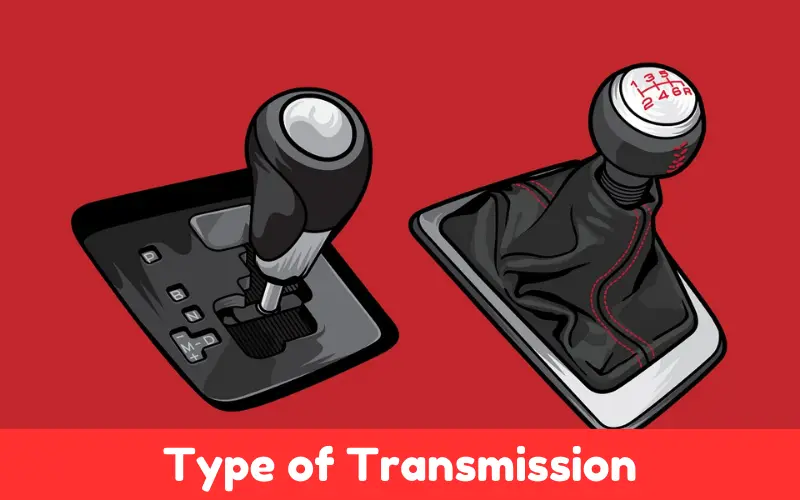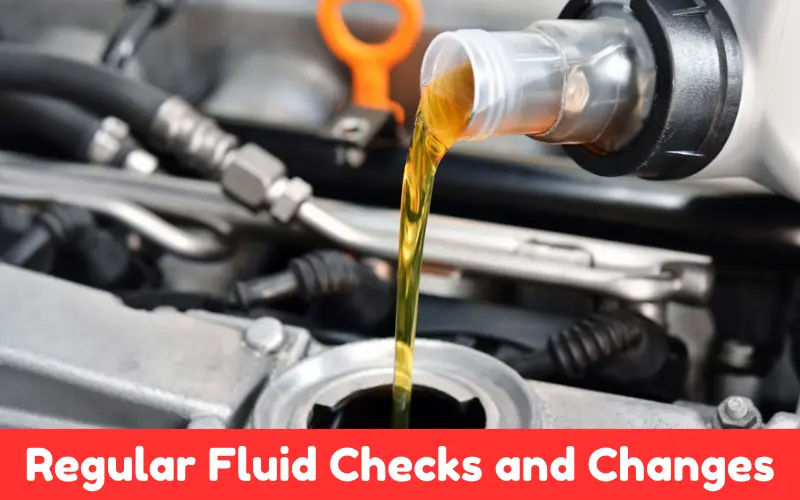When your automobile was manufactured, the transmission was set up to perform as the system’s heart, and just like your heart, for it to work efficiently and for many years to come. It must have sufficient blood flowing through the arteries, veins, and capillaries to do its job.
The transmission fluid is the blood that flows through your car. Understanding your car’s capacity for required transmission fluid and staying up to date with maintenance is the key to avoiding the costly toll of expensive fixes and can keep your car on the road for many years.
Let’s discuss some of the basics regarding typically how many quarts of transmission fluid requires to keep your transmission in tip top shape.
Article Summary
What is Transmission Fluid?
Transmission fluid keeps the entire transmission system cool by reducing friction and lubricating its moving parts. This fluid keeps the gears within the transmission shifting smoothly and properly.
Transmission fluid also acts as a preventive measure by eliminating the build-up and accumulation of debris that contributes to transmission deterioration.
This fluid enables the gear train to operate under the necessary pressure to get your car moving. While transmission fluid shouldn’t change its color (it tends to remain red).
Ensure that it doesn’t appear contaminated and that you may need to get it checked if you notice a burned smell, low fluid levels, or leaks, as these may be signs of engine trouble.
Determining The Right Amount of Transmission Fluid
The type of transmission and the make and model of your vehicle would determine how much transmission fluid your car needs. This table gives an idea of the approximate amount of quart your car would need.
Read the Owner’s Manual
Your car’s owner’s manual should be your first stop when figuring out how much transmission fluid to use. The manual contains the exact capacity that you should use to make a full transmission fluid change on your vehicle.
Type of Transmission
Automatic Transmission: For most automatic transmissions, you’ll need between 8 to 16 quarts of transmission fluid. Some vehicles may need more or less, so also follow the manual here.

Manual Transmission: A manual transmission might only need a quart or two of fluid, often in a range of 2 to 4 quarts. Check your owner’s manual for the size.
Fluid Type
Specific type of fluid recommended by the vehicle manufacturer. Sometimes, several different kinds of fluid can generally be used, but the recommended type is preferred.
Partial vs Full Fluid Change
When you take your car in for a full transmission fluid change, it is often called a transmission flush. A full change will require more fluid often than a partial change in the form of a typical drain and refill job.
While the average partial change will likely require around 4 to 6 quarts of fluid, a full change could require 10 to 12 or more quarts.
How To Check Transmission Fluid Level?
You should check your car’s fluid and if necessary add right amount of transmission fluid. Steps to check and add transmission fluid are given below:
Warm Up the Engine: Turn the key to the ignition, and let your car run for 2 to 3 minutes to heat up the transmission fluid.
Open the Bonnet: Open the bonnet, looking especially for signs of mildew or staleness.
Dipstick: Look for the transmission fluid dipstick, usually denoted by a label and lodged in the back of the engine bay.
Check the Fluid Level: Pull the dipstick completely out, clean it off, poke it back in, and pull it out again. The fluid level should be at the recommended level.
If Necessary Add Fluid: If the fluid is low, use a funnel to add the correct type of transmission fluid. Add it little by little, and check the level often so you don’t overfill.
How To Maintain Vehicle’s Transmission Fluid?
Regular Fluid Checks and Changes
Regardless of the type of transmission you have in your vehicle or the reason for your check, the most effective thing that you can do to keep your transmission running is to check the transmission fluid on a regular basis and change it when necessary.

Transmission fluid lubricates the moving parts and cools your transmission. Over time, the transmission fluid can degrade, become contaminated, or simply lose its properties and effectiveness.
Checking the fluid level and looking for contamination can tell you a lot about what’s happening inside your transmission fluid system (refer to your vehicle’s owner manual for when the fluid should be changed, usually between 30,000 and 60,000 miles).
If the fluid is at the correct level and in good condition, you can prevent overheating and transmission component wear.
Avoiding Overloading and Aggressive Driving
Heavy loads, such as towing or hauling, can also degrade your transmission. If you overload your car or truck so that it has to lug through clogged gears, you’re putting undue stress on your transmission, which will generate more heat in the process.
This both speeds up the wear process and may lead to failure. Similarly, aggressive driving, with sudden starts (acceleration) and stops (braking), will also put your car under undue stress.
Quickly grabbing cogs will lead to abrupt and stressful shifts that degrade your transmission, mainly because they make all the components work harder.
The best way to ensure that you never have to drop the transmission fluid to check for metal shavings is to simply avoid overloading your car and drive smoothly.
Nothing will increase the mileage of your transmission and extend its life more than a gradual acceleration and deceleration.
Keeping The Transmission Cool
The transmission fluid can be greatly weakened by heat. One of the major causes of early transmission failure is overheating.
Be sure your transmission cooling system is operating correctly and without leaks or damage that could severely impact your transmission.
In particular, it’s important to inspect the radiator and transmission cooler carefully if you frequently drive in stop and go traffic or regularly pull heavy loads.
If you live in a hot climate, consider installing an auxiliary transmission cooler to increase cooling capacity.
Always service your vehicle’s cooling system on schedule and make sure its radiator is cleaned regularly so your transmission can avoid becoming too hot.
FAQs On How Many Quarts of Transmission Fluid
How Often Should I Change My Transmission Fluid?
It depends on the manufacturer and how each vehicle’s transmission system is constructed. The majority of vehicles on the road will require transmission fluid change every 30,000 to 60,000 miles. High quality vehicles with complex transmission systems might have longer intervals between changes, like 100,000 miles. Check your owner’s manual for your vehicle’s transmission fluid process that is affected by your transmission type.
What Are the Signs That Transmission Fluid Needs To Be Changed?
If you’re looking for telltale signs that your car might need a transmission fluid change, three things to check into are an inability to shift gears, slippage while shifting, and whining or grinding. If the fluid is dark or has a burnt smell, it’s been too long. Other signs include difficulty in moving the stick into the desired gear, not going into drive, neutral, or reverse for no reason. If you look at the fluid when you check your oil, and it appears dark, or you smell a burnt odor, then you know it’s been too long. These are symptoms that can often crop up if you don’t check them regularly.
Can I Change My Transmission Fluid Myself?
Changing transmission fluid is a DIY job that some experienced repairers take on, but it requires a good understanding of your vehicle’s system and the tools to do it (your car’s service manual can help steer you through the process). If you’re comfortable with other car maintenance tasks and have the proper equipment, you can change your transmission fluid on your own. However, due to transmission complexity and vitality, many people end up opting for a professional mechanic to handle the dirty work and guarantee the system is correctly maintained.
What Type of Transmission Fluid Should I Use?
Depending on the make of your vehicle, you will need either synthetic, multipurpose fluid, or ATF (automatic transmission fluid). If you use the wrong ATF fluid, you will compromise the health of your transmission. Look up your owner’s manual and use the fluid type that is recommended for the specific make of your vehicle. There are many different types of automatic transmission fluid available for you to use. Some vehicles are designed to use specific ATF than others and are divided into My First ATF, My Second ATF, SF SYNTHETIC ATF, regular ATF, ATF II or III, Multipurpose fluid MP, and My 3rd ATF.
What Happens If I Overfill or Underfill My Transmission Fluid?
Either overfilling (having too much fluid in your transmission) or underfilling (not having enough fluid in your transmission) can result in major problems. Overfilling fluid in your transmission increases pressure inside of it. This will cause seals to fail and leak over time. It can also lead to foaming, which reduces the fluid’s ability to lubricate and keep your transmission cool. Underfilling fluid results in insufficient lubrication for your transmission to operate smoothly and can cause excessive wear, overheating, and eventual transmission failure. You must maintain the fluid level that is listed in your owner’s manual to keep your transmission in good shape and functioning properly.
Conclusion
Your car’s transmission depends on you to keep it supplied with the proper amount of transmission fluid. Always consult your owner’s manual for exact recommendations on the type of fluid to use. Take your car to any professional mechanic.
If you have questions concerning the process, have them answer or explain. Regular checks of your transmission fluid will give you years of transmission service without costly repair.
Practicing these techniques will ensure your transmission stays in the best condition possible, hopefully allowing you to cruise down the road with zero effort or a forgotten shift for many years to come.

